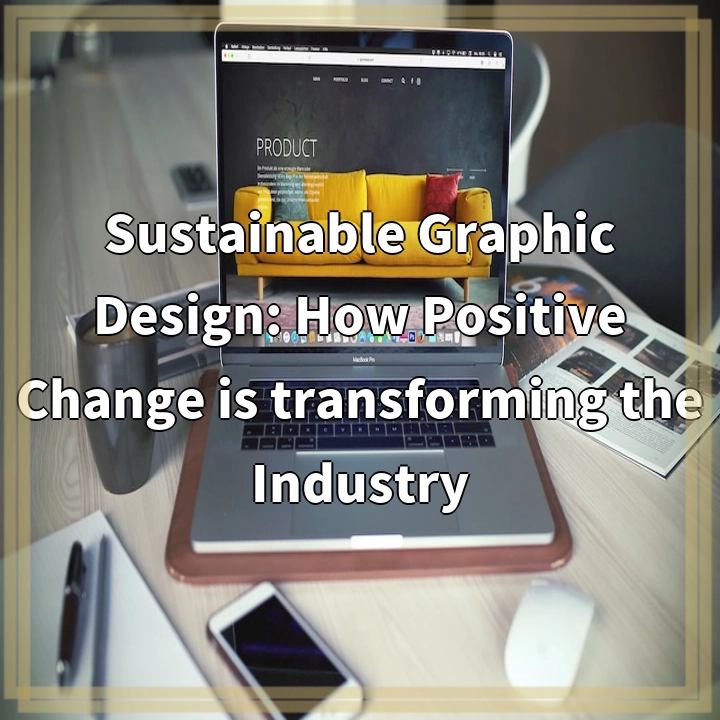
What is Sustainable Graphic Design?
Sustainable graphic design is an approach to graphic design that integrates environmental, social, and economic considerations into every stage of the design process. It focuses on minimizing the negative impact of graphic design practices on the environment and society, while maximizing positive social and environmental outcomes.
Real-World Problems associated with Sustainable Graphic Design
1. Resource Consumption:
Traditional graphic design often relies on materials and processes that have a significant environmental impact. From paper waste to chemical-heavy printing techniques, the industry has contributed to deforestation, air pollution, and water contamination. Sustainable graphic design aims to address these issues by promoting the use of eco-friendly materials and production methods.
2. Waste Generation:
The graphic design industry generates a substantial amount of waste, including discarded prints, unused materials, and packaging waste. These items often end up in landfills or incinerators, contributing to the already overwhelming waste crisis. Embracing sustainable practices can help reduce waste generation by encouraging the adoption of recycling, upcycling, and minimalist design principles.
3. Carbon Footprint:
The production and distribution of graphic design materials, such as prints and promotional items, contribute to greenhouse gas emissions, leading to climate change. Sustainable graphic design acknowledges the carbon footprint of these activities and seeks alternative solutions, including using digital platforms, optimizing production processes, and supporting local suppliers to minimize transportation emissions.
4. Toxicity and Pollution:
Graphic design often involves the use of toxic chemicals and solvents in printing and production processes. These substances can contaminate the air, soil, and water, posing health risks to workers, consumers, and communities. Sustainable graphic design advocates for the use of non-toxic materials and environmentally friendly printing methods to minimize pollution and protect human health.
5. Lack of Awareness and Education:
One of the biggest challenges in implementing sustainable graphic design practices is the lack of awareness and education within the industry. Many designers may not be familiar with sustainable principles or may be hesitant to adopt them due to perceived financial constraints or limited client demand. Increasing awareness and providing resources and training can help overcome these barriers and drive positive change.
Conclusion:
Sustainable graphic design offers a responsible and ethical approach to creating visual communication. By addressing resource consumption, waste generation, carbon footprint, toxicity, and the lack of awareness, the industry can actively contribute to a more sustainable future. Embracing sustainable practices can lead to innovative and creative solutions that not only benefit the environment but also align with the values of conscious consumers.

Potential Solutions for Sustainable Graphic Design
1. Material Selection:
Choose eco-friendly materials for graphic design projects, such as recycled paper, soy-based inks, and sustainable packaging materials. Additionally, consider digital alternatives whenever possible to reduce the consumption of physical resources.
2. Minimize Waste:
Embrace minimalist design principles to reduce the generation of waste. Optimize print runs to avoid unnecessary excess. Implement recycling and upcycling practices for unused materials or old designs.
3. Digital Transformation:
Shift towards digital platforms for distribution, such as email newsletters and online advertisements, to minimize carbon emissions associated with physical production, transportation, and disposal.
4. Non-Toxic Printing:
Choose environmentally friendly printing methods that use low or no VOC inks and water-based coatings to minimize toxicity and pollution. Stay updated with advancements in green printing technologies.
5. Education and Collaboration:
Expand awareness and education about sustainable graphic design practices through workshops, industry events, and online resources. Collaborate with other designers, clients, and suppliers to collectively drive positive change and create demand for sustainable design.
Conclusion:
By implementing these solutions, the graphic design industry can significantly reduce its environmental impact and promote a more sustainable future. Embracing eco-conscious practices not only benefits the environment but also enhances brand reputation, attracts conscious consumers, and supports the global shift towards a greener economy.















